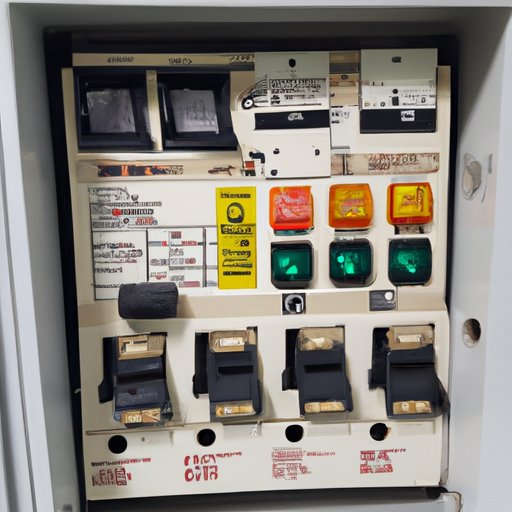Introduction
Circuit breakers are a vital safety feature in any home. They are designed to protect your electrical system from short circuits and power surges that could cause a fire, but they can also be tripped by an overloaded electrical circuit. One of the most common culprits of circuit overload is the microwave oven. In this article, we’ll explore why microwaves trip circuit breakers and what you can do to prevent it from happening again.

How Microwaves Overload Circuit Breakers
Microwaves require a large amount of electricity to run, especially when they are used for high-powered tasks such as defrosting or cooking. Many microwaves draw up to 1500 watts of power, which is enough to overload a standard 15 amp circuit. If too many appliances are plugged into the same circuit, the combined electrical demand may exceed the capacity of the circuit and cause it to trip.
Another potential issue is an old or faulty microwave. Older models may draw more power than newer models, and faulty wiring can cause sudden power surges that will trip the breaker. If you have an older model, it’s important to have it inspected regularly to ensure it is operating safely.

What To Do When Your Microwave Trips a Breaker
If your microwave trips the breaker, the first step is to identify the issue. Unplug all of the appliances on the circuit and reset the breaker. If the breaker trips again, you know that the issue is not with one of the other appliances and you need to troubleshoot the microwave.
The next step is to test the circuit breaker itself. Make sure that it is rated for the correct amperage for your home, and check for any signs of damage or wear. If the breaker appears to be functioning correctly, the issue is likely with the microwave itself.
Finally, you can try troubleshooting the microwave. Check the wiring for any loose connections or frayed wires. Make sure that the door seal is tight and that there are no gaps where air can escape. You should also check the fan and venting system to make sure they are functioning properly.
How to Avoid Overloading Your Circuit with a Microwave
The best way to avoid overloading your circuit with a microwave is to install a dedicated circuit. This will ensure that the microwave has its own dedicated power source and will reduce the risk of overload. It’s also important to avoid using extension cords, as these can significantly increase the risk of an overload.
Conclusion
In conclusion, microwaves can trip circuit breakers due to their high electrical demands. Identifying the issue and troubleshooting the microwave are the first steps in resolving the problem. To avoid future trips, it is recommended to install a dedicated circuit and to avoid using extension cords. With proper maintenance and precautions, you can ensure that your microwave runs safely and efficiently.
(Note: Is this article not meeting your expectations? Do you have knowledge or insights to share? Unlock new opportunities and expand your reach by joining our authors team. Click Registration to join us and share your expertise with our readers.)
